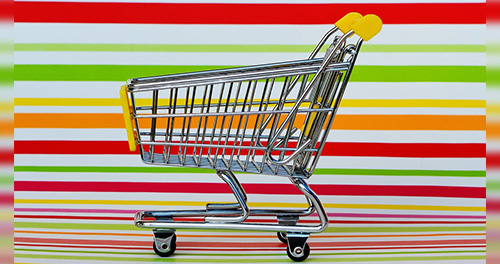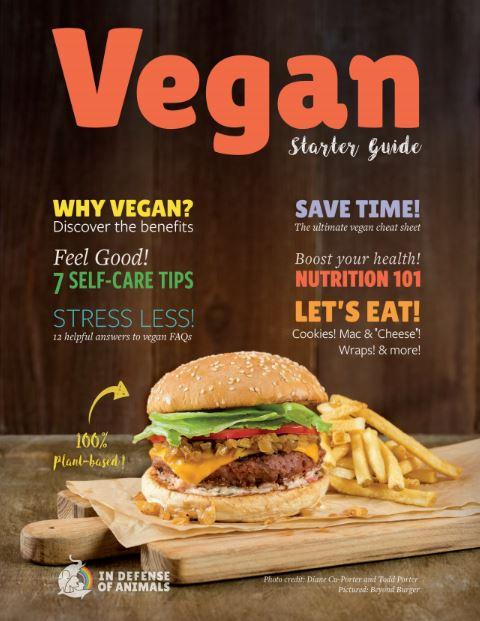What Do “Free-Range,” “Organic” and Other Labels Really Mean?

As public concern over the treatment of farmed animals grows, labels such as “Free Range” and “Organic” are becoming increasingly common. Many people who care about animals purchase these products in the hopes of avoiding the cruelties of factory farming, so it’s important to understand exactly what each of these labels mean since they vary a great deal.

Organic
“Organic” typically refers to the food that farmed animals eat which is free of antibiotics and pesticides. However, this label has very little meaning in terms of animal welfare. A number of large organic farms in the U.S. deny animals access to sunlight, and employ cruel mutilation practices such as debeaking and tail docking without pain relief.
On organic dairy farms, calves are permanently separated from their mothers mere hours after birth so that farmers can sell the milk. Male calves are useless to the dairy industry, so they are usually slaughtered for veal. The female calves are usually housed in lonely plastic hutches and kept alive on artificial formula, destined to suffer the same fate as their mothers. When a cow’s milk production declines as she approaches 3-5 years old, she will be sent to a slaughterhouse to meet a terrifying and painful death.
In 2016, the USDA proposed a new rule to clarify animal welfare standards under the “Organic” label after many consumers said they felt misled into believing it held significance regarding animal welfare, but this rule has not passed and it still remains in limbo.

Cage-Free
This label typically applies to eggs products. “Cage Free” basically means that hens are not kept in cages, but it has no further guarantees regarding animal welfare. “Cage-free” hens still suffer many of the same issues that caged hens do: They are subjected to overcrowding, poor air quality, physical and emotional stress; they are deprived of fresh air, sunshine and grass under their feet; they are painfully debeaked without anesthetic so that they are unable to peck and injure each other in stressful living conditions; they can be exposed to more than 17 hours of artificial light every day; and are routinely starved to induce faster laying cycles.
Whether cage-free or conventional, all egg farms rely on purchasing hens from hatcheries where millions of day-old male chicks are brutally ground alive, gassed or suffocated each year because they cannot lay eggs, and are a different breed from the broiler chickens raised for meat. Even on above-average farms, hens will be sent to their brutal deaths at slaughterhouses when their egg production declines at only 1-2 years old.

Humanely Raised
The “Humanely Raised” label is not defined by the USDA, it is self-defined by the producer itself, so there is little way of knowing what it really means, and it shouldn't be trusted at all by consumers.
It’s important to remember that all animals raised for food are seen as commodities. Their individual lives are not valued, meaning that profit margins are always the top priority over “humane” practices, regardless of what definition is assigned to it.

Free Range
According to the USDA, “Producers must demonstrate to the Agency that the poultry has been allowed access to the outside.” While this sounds nice, unfortunately there are no guarantees for the length of time outside, and the size of the outdoor space. The outdoor space isn’t necessarily grass either, it could be gravel, pavement or dirt. The Associated Press reported that the USDA’s regulations don’t “require the birds to actually spend time outdoors, only to have access.” Meaning that even if farmers opened the doors on sheds with tens of thousands of birds inside, and then closed it before any chickens went outside, they can still claim “Free-Range” on their packaging. “Free Range” does not guarantee any other welfare standards.

Natural
This label usually refers only to how meat is processed after slaughter, not to how the animals are raised, or surprisingly even their diet. The “Natural” label has little, if any, significance to animal welfare. The Food Safety and Inspection Service states that "Jurisdiction starts at time of slaughter, not during the raising of the animal.”

Grass-fed
“Grass-fed” is a dietary standard only, and this claim has little relevance to animal welfare. Many consumers are also surprised to learn that this label can still be used if the animals start their lives on grass, but spends the latter part of their lives on a feedlot.

Vegetarian-fed
This label means that animals are fed a vegetarian diet, but has no relevance to animal welfare.
Many consumers are shocked to learn that it’s common practice for farmers to feed animals feces. For example, poultry litter is commonly fed to cows raised for beef. “Poultry litter,” is an industry euphemism for the filth that is scooped up off the floors of chicken cages and broiler houses. It's mainly a combination of feces, feathers, and uneaten chicken feed. According to the U.S. Consumers Union, a typical sample may also come with a side of antibiotics, heavy metals, disease-causing bacteria, and even bits of dead rodents.
Due to mad cow disease, it is generally illegal for farmers to feed cows back to cows; however, pigs can be fed to pigs and turkeys can be fed to turkeys. Also, pigs, chickens, and turkeys who have been fed cows can be fed back to cows.
____
While you may come across a farm offering slightly improved conditions when compared to conventional farming, it’s important to remember that none of these labels protect animals during transport or at slaughter, and that all farmed animals will be subjected to the same terrifying deaths at only a fraction of their natural lifespans.
More and more people are taking a stand against the cruelty behind humane labeling by reducing or eliminating their consumption of animal products. With so many delicious meat, egg, and dairy alternatives on the market today, that taste just like the products they replace, it’s now easier than ever to eat cruelty-free versions of all the meals you enjoy.
Find delicious recipes and more information about making a difference for farmed animals by downloading our Veg Starter Guide today!


